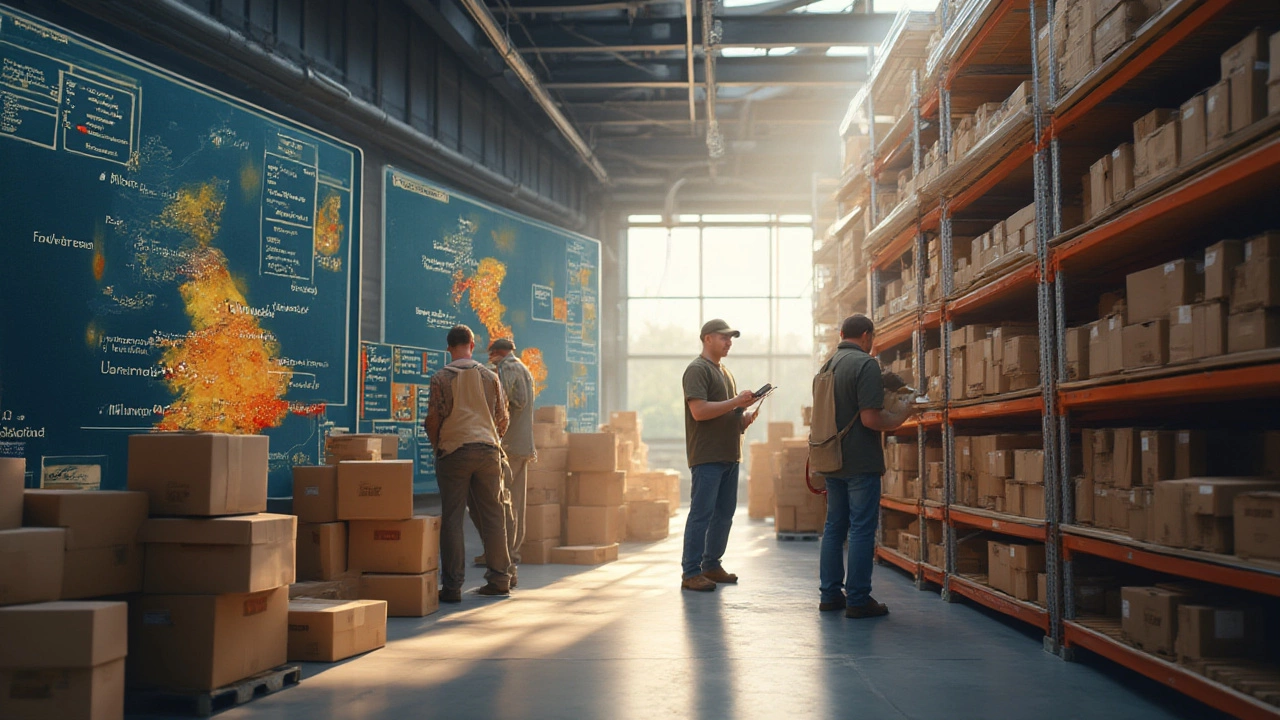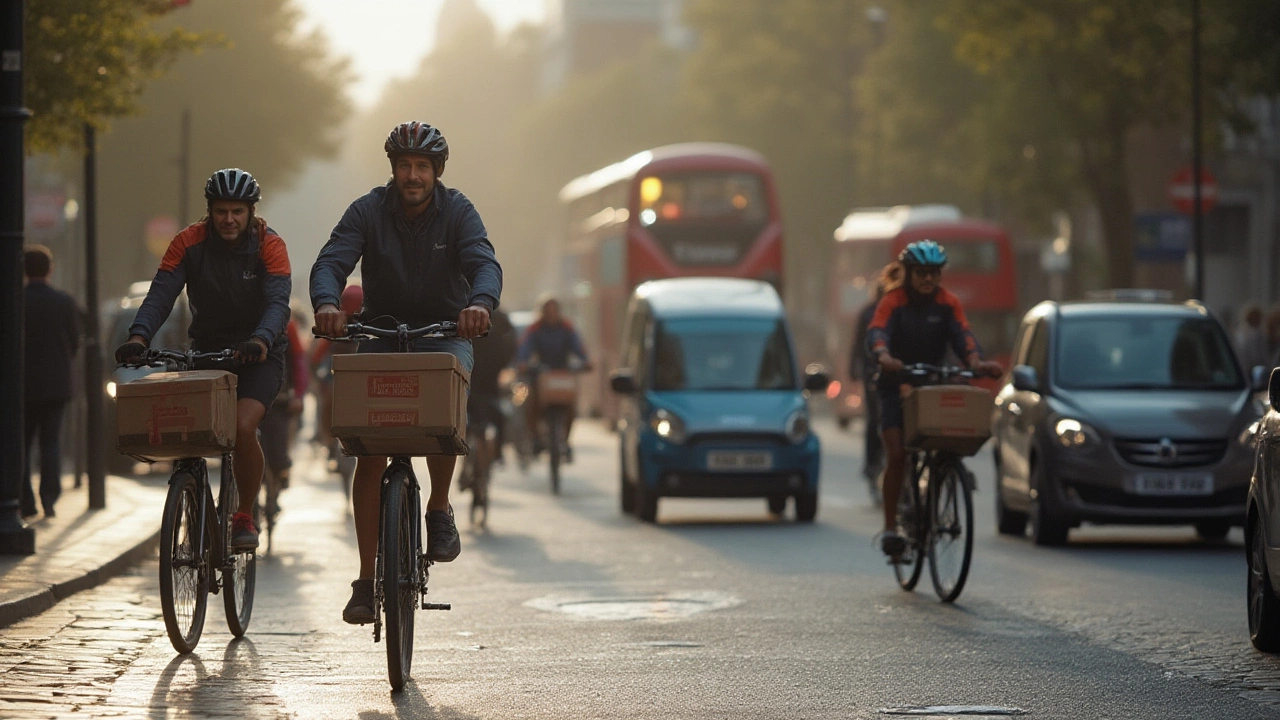Ever wonder why a package can cross continents without a hitch but somehow gets lost between your local delivery depot and your doorstep? That final stretch, often called the 'last mile,' is where things get surprisingly complicated—and sometimes risky. Online shopping might make buying easy, but getting those parcels to porches, apartment lobbies, and country mailboxes? That’s where the real chaos can kick in. The last mile isn’t just an industry buzzword, either. It’s both the biggest cost chunk in delivery and the biggest opportunity for things to go wrong, costing companies billions every year. When your dinner is cold because the driver missed your building, or your new phone vanishes without a trace, that’s last mile risk coming to life. No matter how smart the warehouse tech is or how slick their tracking site looks, no company can fully escape what goes down on the streets.
What Last Mile Delivery Risk Actually Means
Last mile delivery risk goes way deeper than just slow drivers or delayed packages. It’s the cocktail of challenges that pop up when goods move from a regional hub, warehouse, or even a local store to their final destination—the customer. And in a world where customers expect one or two-day delivery as a baseline, the bar keeps going higher. Traffic jams, neighborhood layouts, seasonal weather, and even who answers the door can all turn a routine delivery into a headache.
Complicating things further, this last stretch tends to be the least efficient. According to a study by Capgemini in 2023, last mile logistics can make up over 53% of the total delivery cost of shipping an item. That’s way more than the air freight or cross-country trucking that came before it. The price of gas, insurance, software, and pay for drivers all pile up, but the real pain points pop up in places you wouldn’t expect: when a customer isn’t home, the address is tricky to locate, or access is restricted. Porch piracy—yep, those neighborhood package thieves—now account for tens of millions of dollars in losses each year in the US alone.
Urban areas come with snarling traffic, scarce parking, and building doormen who sometimes reject deliveries. Rural routes sound easy, but just one wrong turn can mean a 30-minute detour. Add weather and accidents, and you’ve got a patchwork of delays, loss, and frustration. Building managers might not allow deliveries past certain hours. Elevators break. And don’t even get started on the December holiday crush, when drivers juggle hundreds of stops and time windows shrink. The unpredictability is the risk. Packages, and trust, can get lost just as fast.

The Real-World Impact: Why Last Mile Risk Can’t Be Ignored
So how bad can these last mile mess-ups really get? Lost or late parcels cost companies money upfront in refunds and reshipments, but the ripple effect is even worse. A 2022 MetaPack survey showed that 56% of online shoppers say they won’t return to a retailer after just one bad experience with a late or lost package. Talk about high stakes—one botched hand-off and a business can lose a loyal customer for good.
There’s also the issue of ‘failed delivery attempts.’ Every time a driver rings the bell and leaves without handing off the box, that’s not just a missed delivery. It’s extra fuel, overtime pay, wear on the vehicle, and another scheduling headache for dispatchers. These attempts skyrocket around holidays, when people travel or aren’t home. In high-density cities, chances of failed attempts are even higher thanks to building codes, security, and red tape. And if the package is perishable—say, groceries or medicine—it can end up wasted, adding another layer of cost.
Delivery risk isn’t just about delays or cost. There are also legal and safety issues when it comes to sensitive deliveries like pharmaceuticals, high-value electronics, or age-restricted goods. Regulatory rules force additional verification, which slows things down and raises the stakes for mistakes. Couriers can face fines if deliveries are left unsecured. And with ecommerce fraud on the rise, packages are more likely than ever to disappear, with criminals targeting delivery vans or front porches. As logistics analyst Amanda Lau put it last year,
“The expectation is perfect but the ground realities of last mile delivery are far, far from it.”
Every little risk rolls up to create a big problem for company profits, customer retention, and even job satisfaction for drivers themselves. Failed last mile deliveries are one of the biggest drivers of burnout and turnover in the logistics world. It’s no wonder companies in the US and Europe have been forced to rethink hiring strategies and boost tech investment just to keep up.

How Companies Are Tackling Last Mile Delivery Risk
Firms aren't just sitting back. They’re throwing everything from artificial intelligence to neighborhood lockers at the problem. Tech giants and scrappy startups alike are racing to smooth out the last mile, reduce risk, and boost customer happiness. One popular fix? Real-time tracking, which lets buyers and dispatchers see exactly where a parcel is, almost down to the street corner. This transparency reassures customers and helps companies catch errors before they snowball into disasters.
Many businesses now offer flexible drop-off options: think doorstep delivery, secure package boxes, in-store pickup, or even sending your parcel to a trusted neighbor or local shop. Amazon, for example, has rolled out their ‘Amazon Locker’ service in thousands of locations as a defensive play against porch theft and failed attempts. Meanwhile, route optimization software helps drivers plan the most efficient path—factoring in traffic, weather, and building access in real-time. According to analyst firm McKinsey, using AI-driven algorithms can shave as much as 25% off last mile costs, while slashing risks around delays and missed stops.
But even with advanced tech, humans are still at the core. Companies have started training drivers for ‘soft skills’—like handling frustrated customers or securing permission for complex building deliveries. Some even provide drivers with extra safety tools, like GPS panic buttons or video verification. Insurance providers are getting more creative too: instead of blanket policies, they now craft flexible policies calibrated to specific routes, driver histories, or product types. The idea: reduce losses and keep premiums affordable by lining up coverage with actual risk.
If you’re a shop owner or entrepreneur, you can play it smart by offering customers multiple delivery options at checkout. Give them delivery time windows, real-time updates, or contactless drop-off instructions. If you ship perishables or electronics, partner with carriers that provide photo-delivery confirmation or one-time passcodes for entry. You’ll protect your bottom line—and keep your reviews glowing.
Still, last mile delivery risk won’t ever fully vanish as long as unpredictability rules the streets. But the brands that get creative, communicate clearly, and put the right tech and people in place will always have the edge. Next time a package disappears or arrives late, remember: it’s not just traffic or weather. It’s the tricky, expensive last mile—the wild west of the logistics world.


